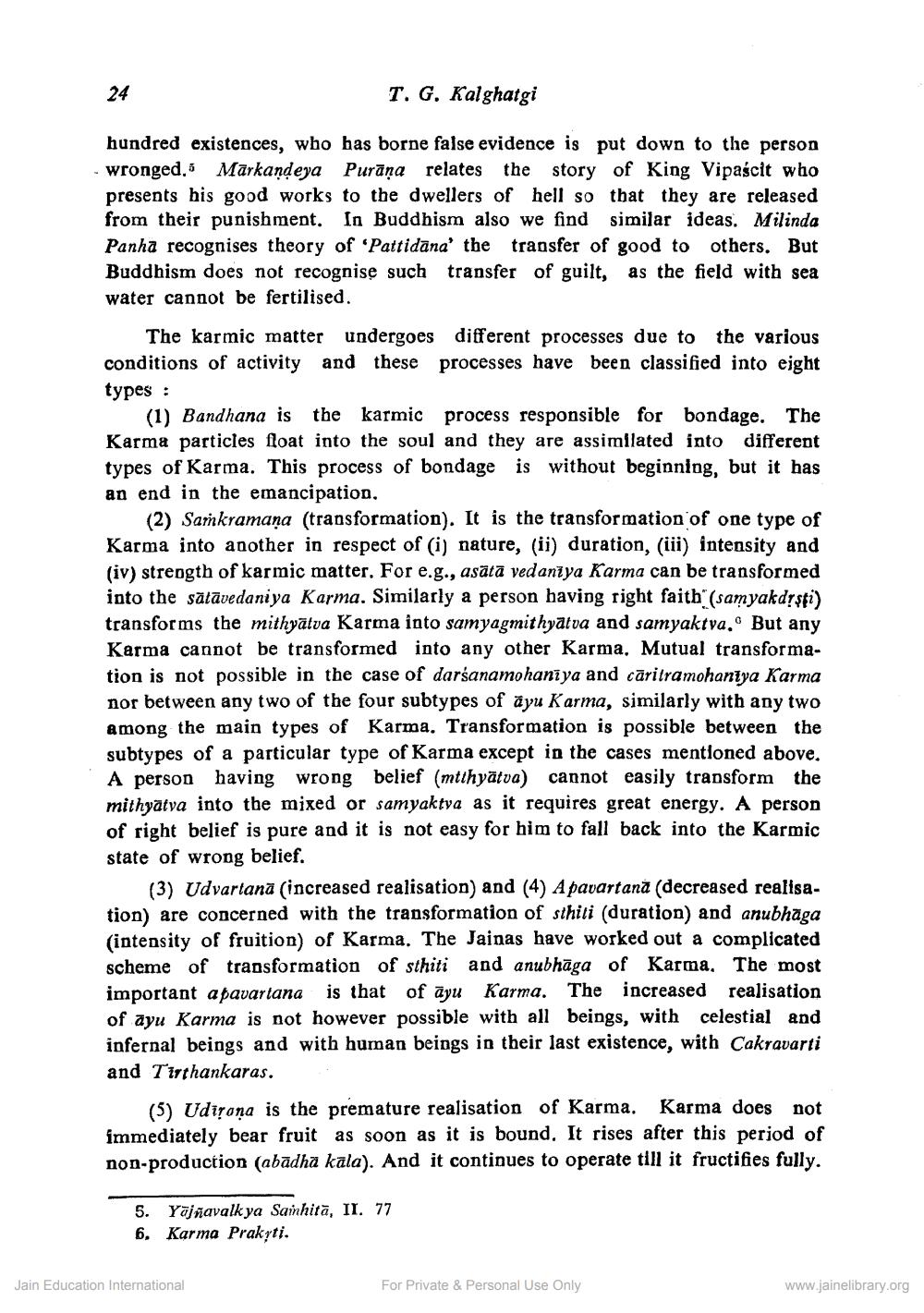________________
24
T. G. Kalghatgi
hundred existences, who has borne false evidence is put down to the person - wronged, Markandeya Purāņa relates the story of King Vipascit who presents his good works to the dwellers of hell so that they are released from their punishment. In Buddhism also we find similar ideas. Milinda Panha recognises theory of 'Pattidana' the transfer of good to others. But Buddhism does not recognise such transfer of guilt, as the field with sea water cannot be fertilised.
The karmic matter undergoes different processes due to the various conditions of activity and these processes have been classified into eight types :
(1) Bandhana is the karmic process responsible for bondage. The Karma particles float into the soul and they are assimilated into different types of Karma. This process of bondage is without beginning, but it has an end in the emancipation,
(2) Sankramana (transformation). It is the transformation of one type of Karma into another in respect of (i) nature, (ii) duration, (iii) intensity and (iv) strength of karmic matter. For e.g., asātā vedaniya Karma can be transformed into the sātāvedaniya Karma. Similarly a person having right faith" (samyakdísti) transforms the mithyātva Karma into samyagmithyatva and samyaktva, But any Karma cannot be transformed into any other Karma, Mutual transformation is not possible in the case of darśanamohanīya and cāritramohantya Karma nor between any two of the four subtypes of ayu Karma, similarly with any two among the main types of Karma. Transformation is possible between the subtypes of a particular type of Karma except in the cases mentioned above. A person having wrong belief (mtthyātva) cannot easily transform the mithyälva into the mixed or samyaktya as it requires great energy. A person of right belief is pure and it is not easy for him to fall back into the Karmic state of wrong belief.
(3) Udvartana (increased realisation) and (4) A pavartană (decreased realisation) are concerned with the transformation of sthiti (duration and anubhāga (intensity of fruition) of Karma. The Jainas have worked out a complicated scheme of transformation of sthiti and anubhāga of Karma. The most important a pavartana is that of ayu Karma. The increased realisation of ayu Karma is not however possible with all beings, with celestial and infernal beings and with human beings in their last existence, with Cakravarti and Tirthankaras.
(5) Udirona is the premature realisation of Karma. Karma does not immediately bear fruit as soon as it is bound. It rises after this period of non-production (abādha kala). And it continues to operate till it fructifies fully.
5. Yajnavalk ya Sainhitā, II. 77 6. Karma Prakyti.
Jain Education International
For Private & Personal Use Only
www.jainelibrary.org




